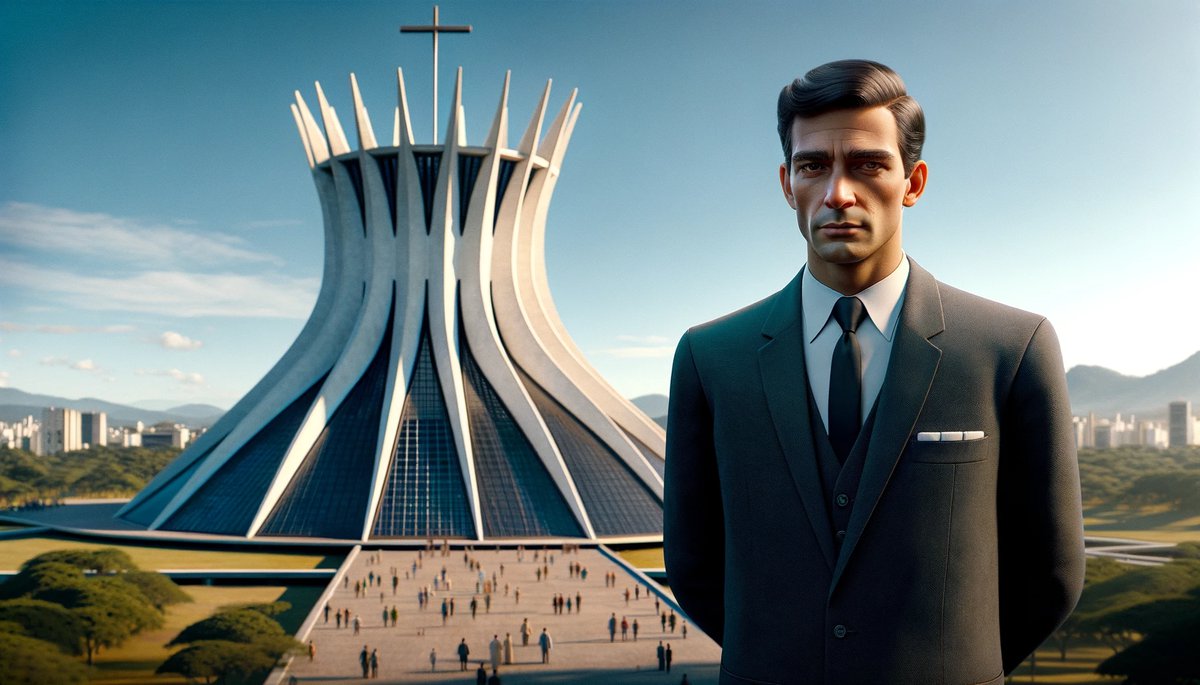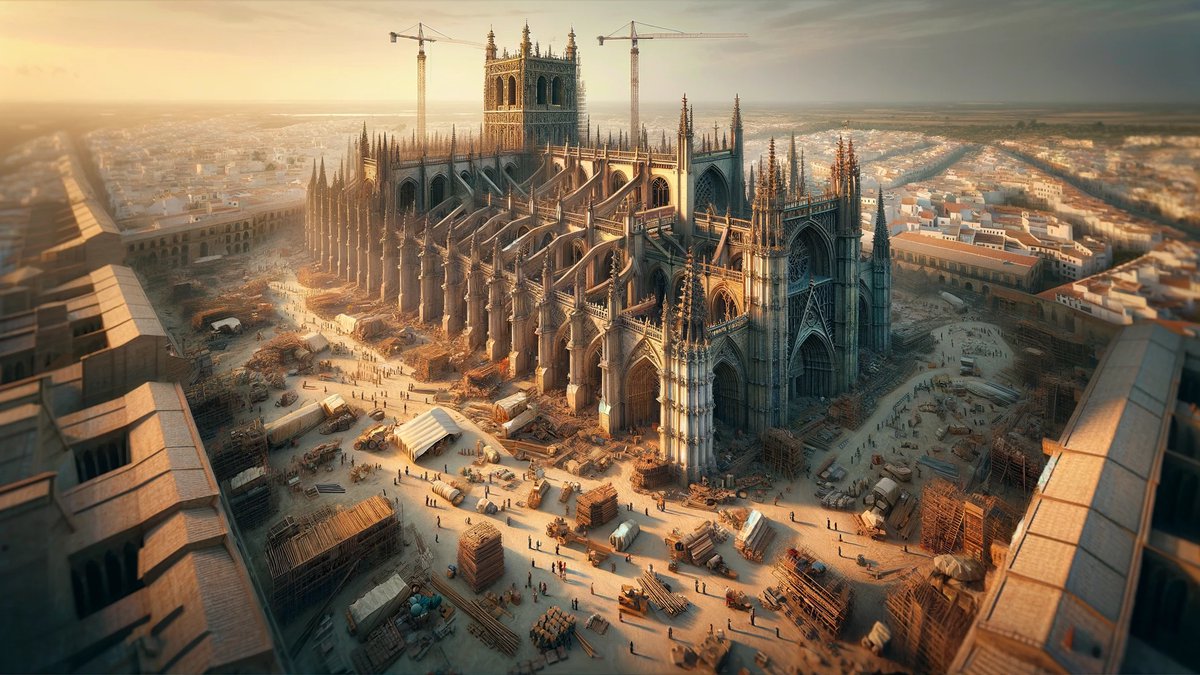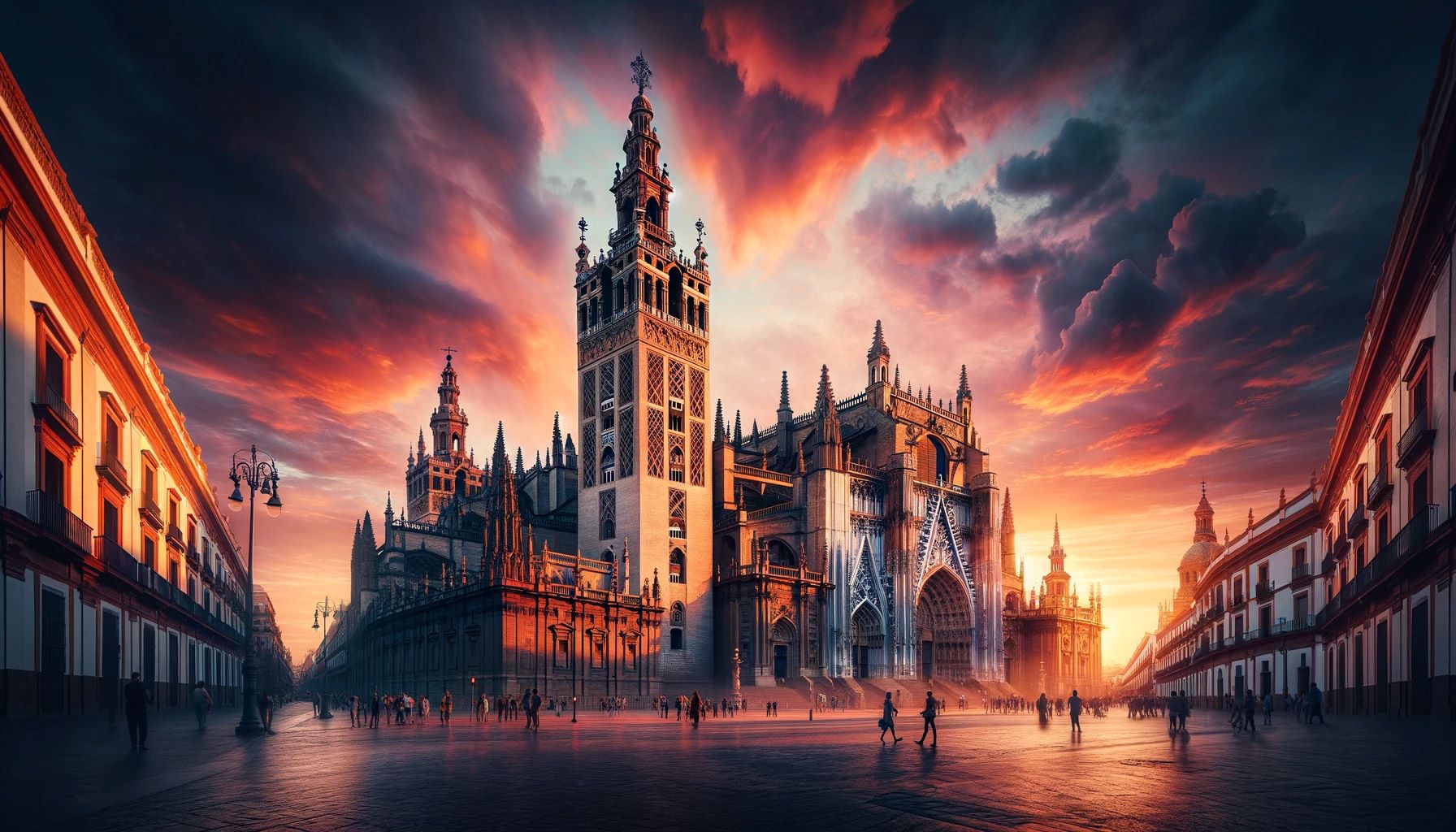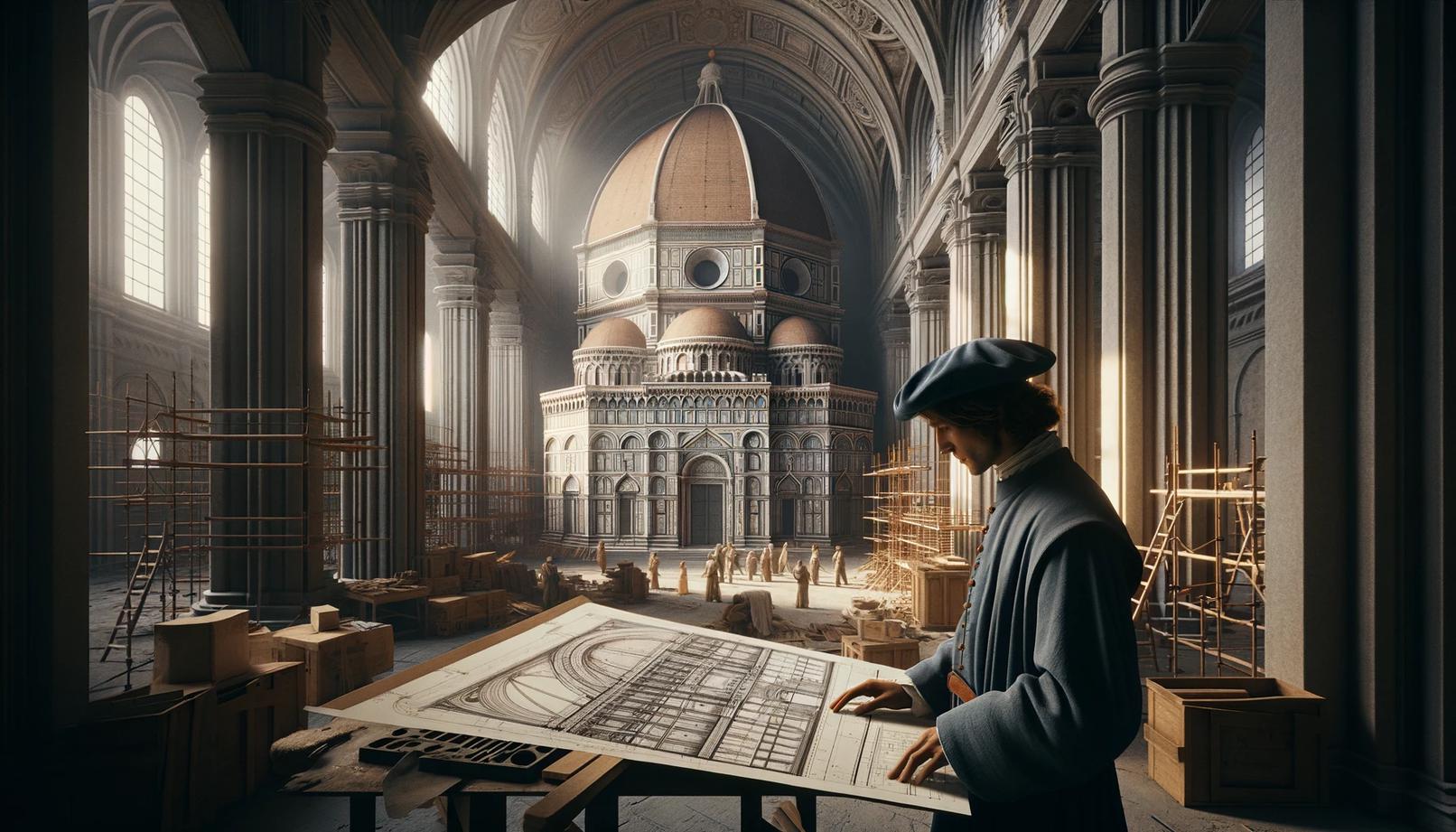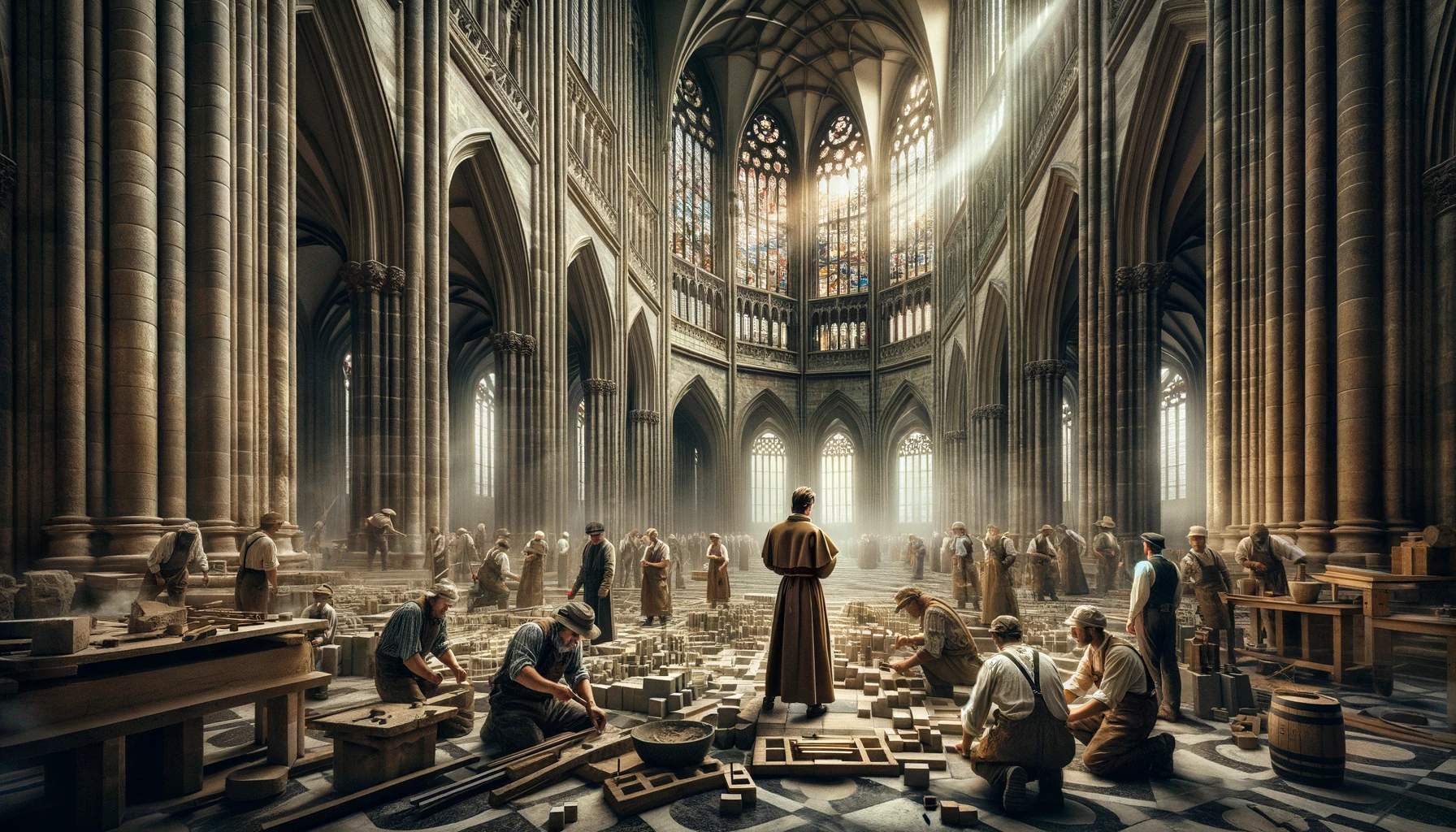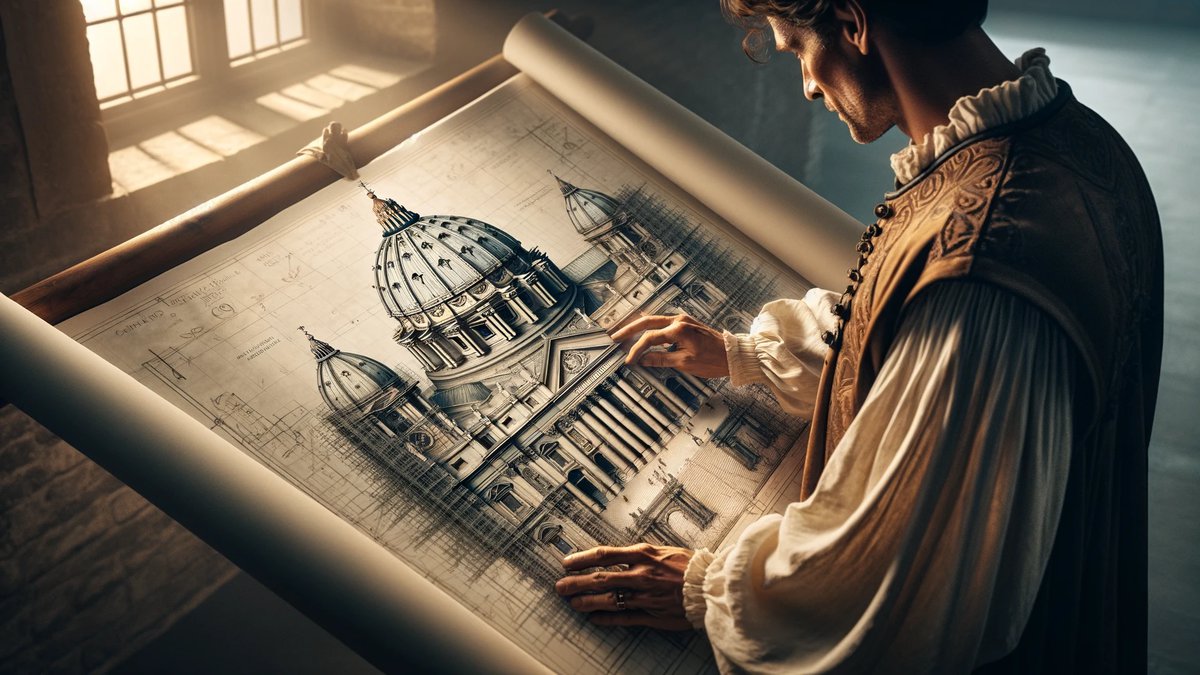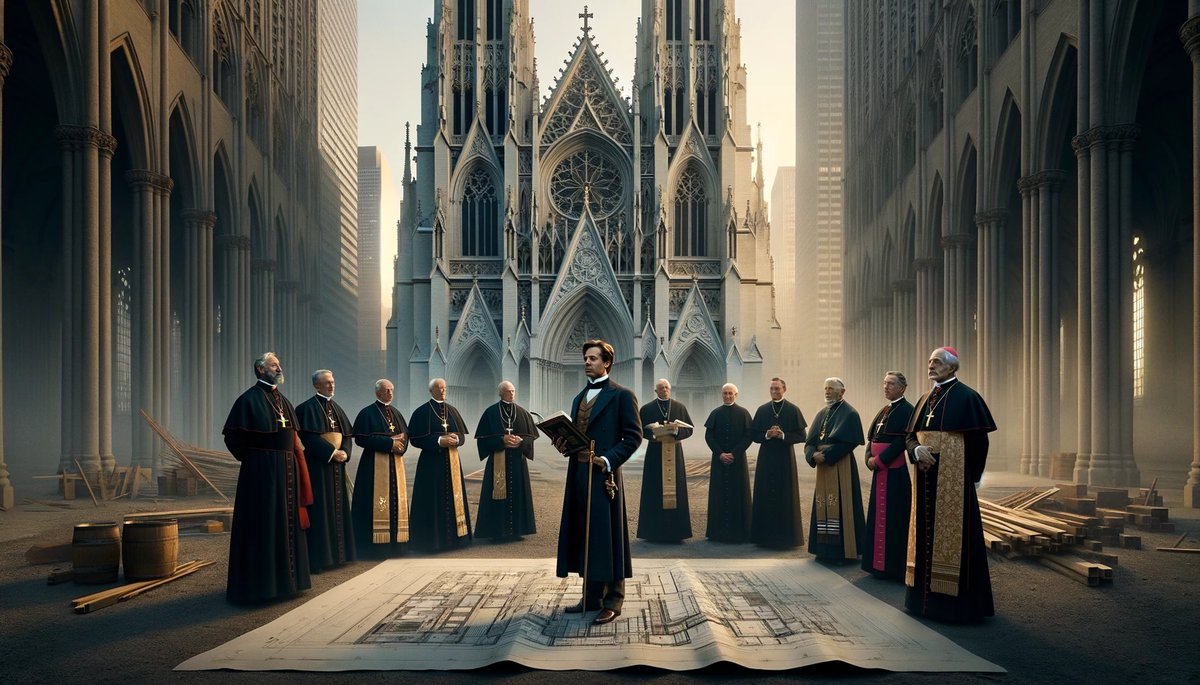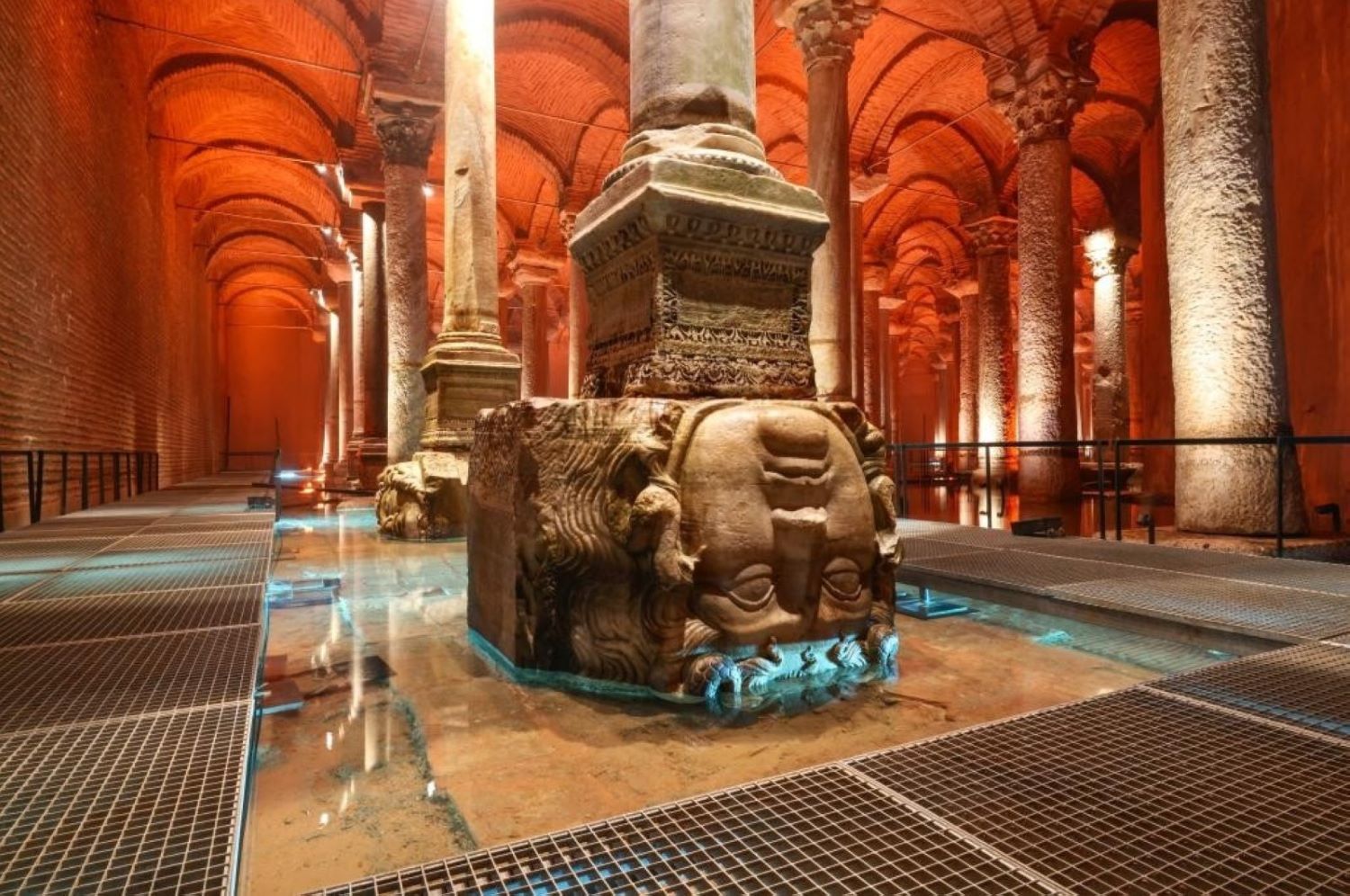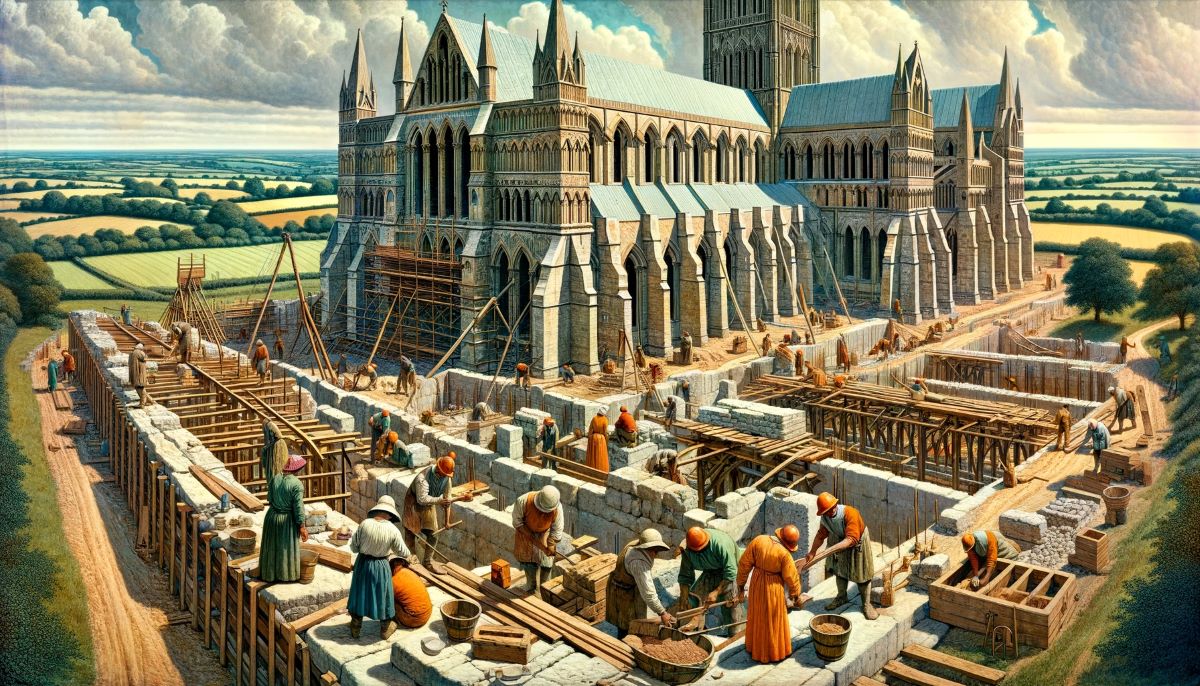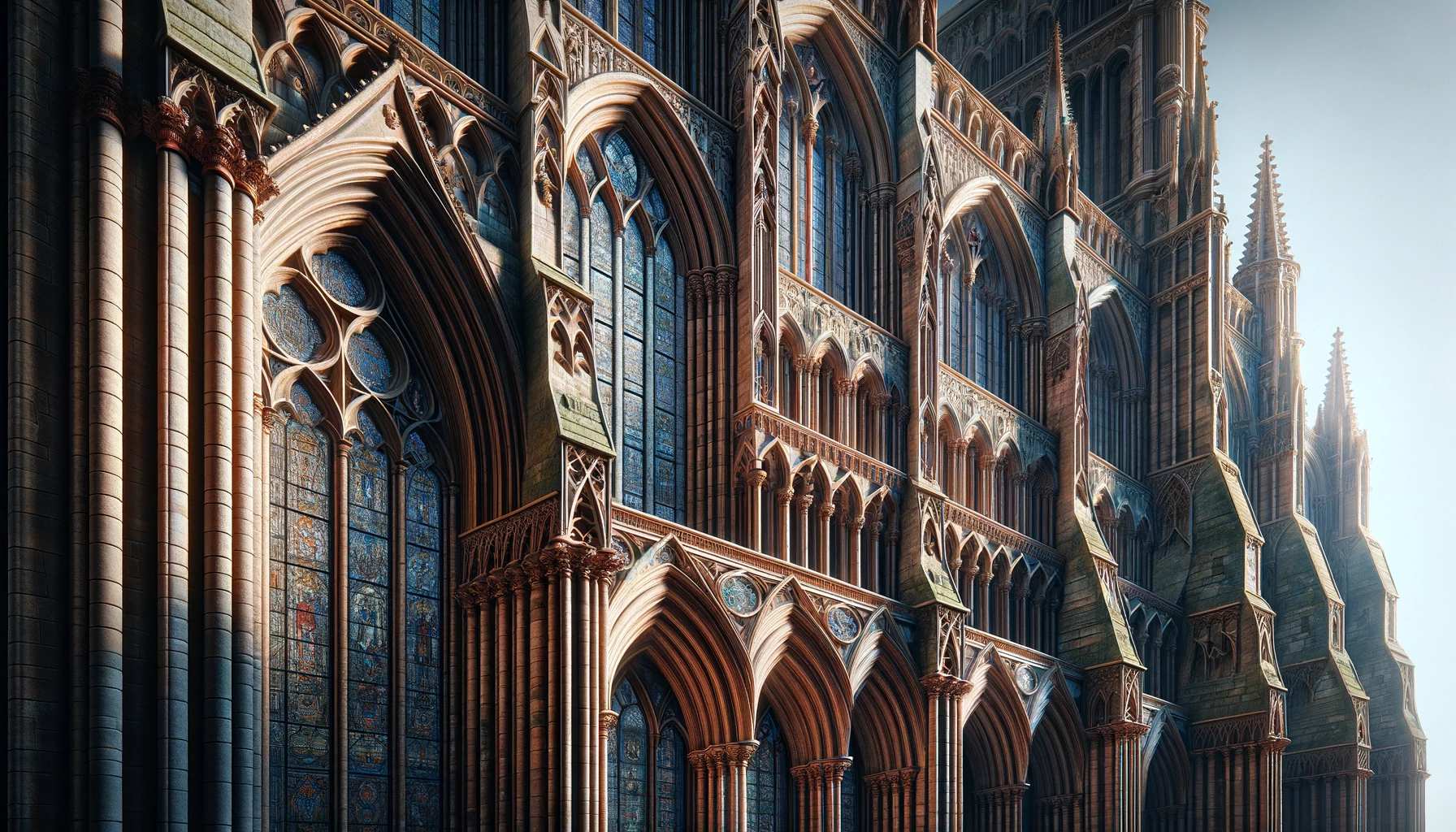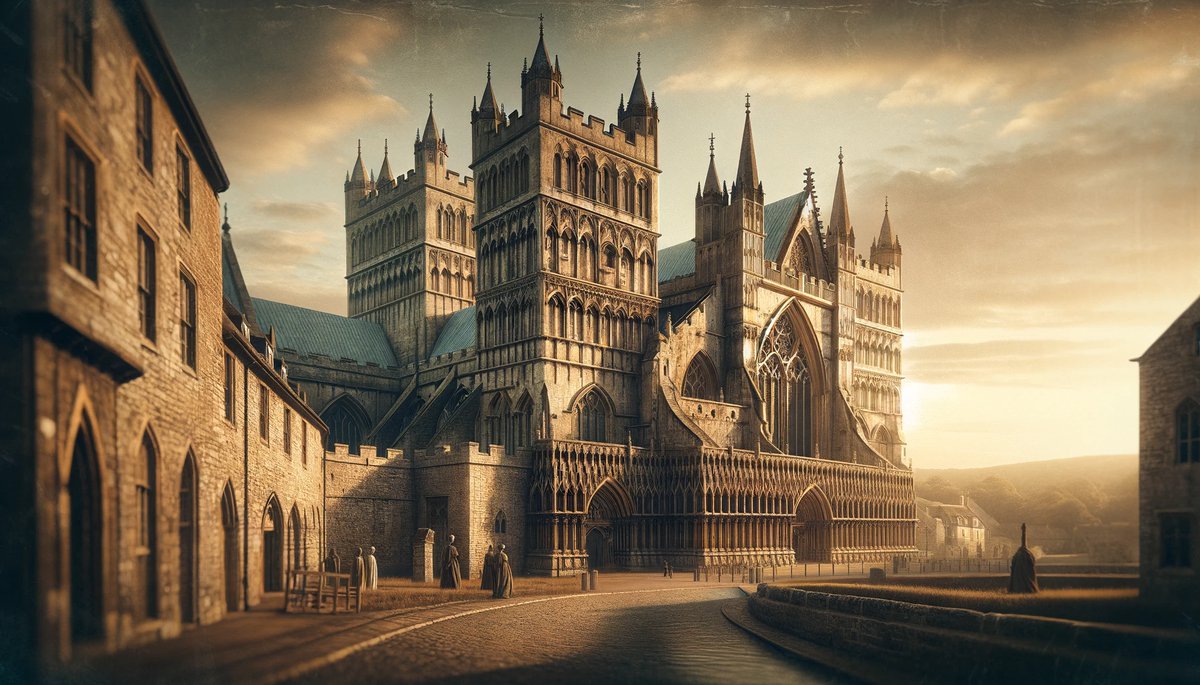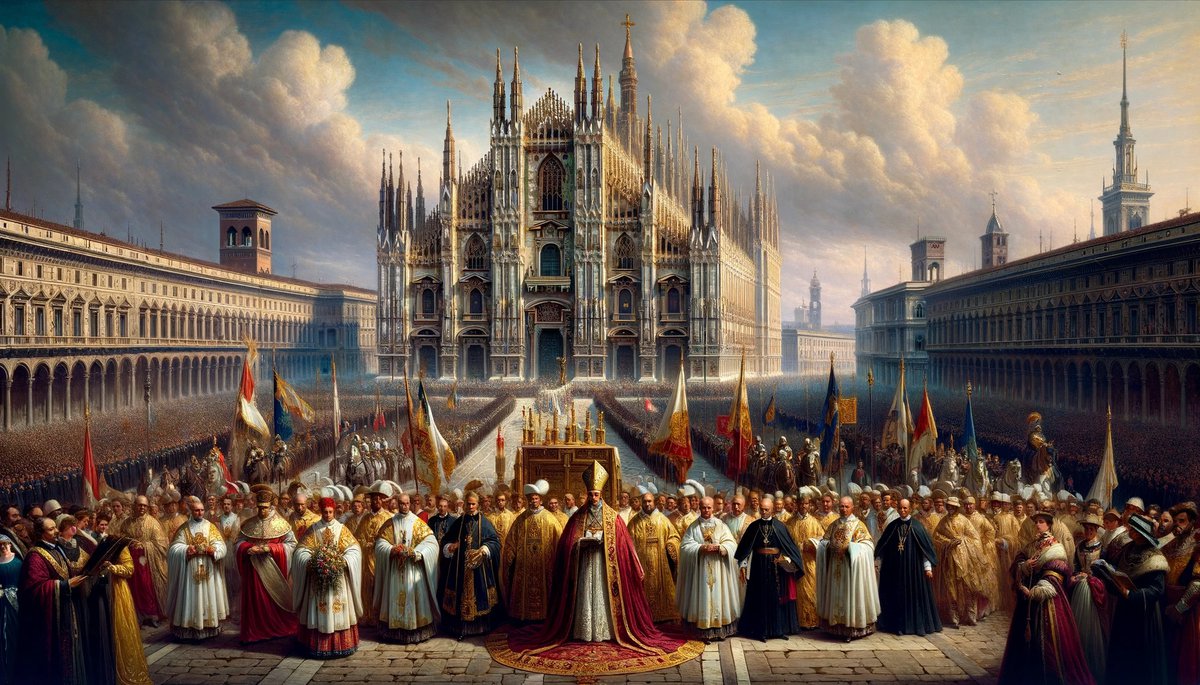Home>Arts and Culture>Who Built The Cathedral Of Seville
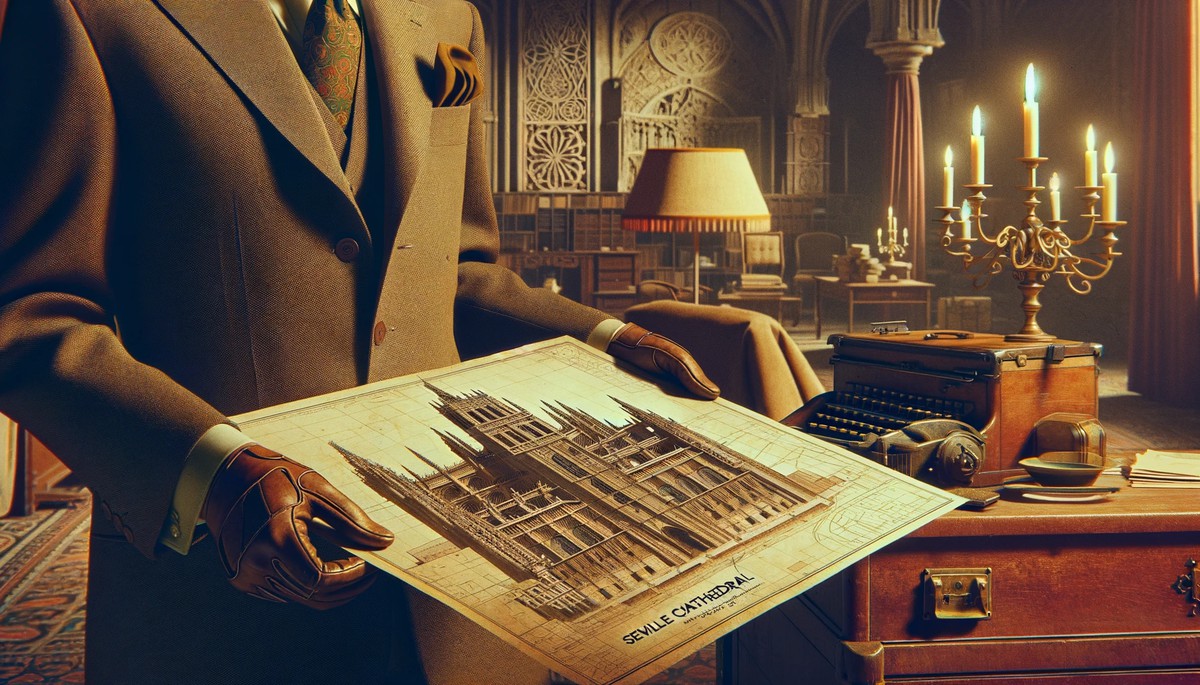

Arts and Culture
Who Built The Cathedral Of Seville
Published: February 15, 2024
Peter Smith, Editorial Director at Christian.net, combines deep insights into faith, politics, and culture to lead content creation that resonates widely. Awarded for his contributions to religious discourse, he previously headed a major organization for religious communicators, enhancing dialogue on faith's societal impacts.
Discover the fascinating history behind the Cathedral of Seville, a masterpiece of arts and culture, and learn about the talented individuals who contributed to its construction. Uncover the secrets of this iconic architectural marvel.
(Many of the links in this article redirect to a specific reviewed product. Your purchase of these products through affiliate links helps to generate commission for Christian.net, at no extra cost. Learn more)
Table of Contents
Introduction
The Cathedral of Seville, also known as the Cathedral of Saint Mary of the See, is a breathtaking architectural marvel that stands as a testament to the rich history and cultural heritage of Spain. This awe-inspiring structure, located in the heart of Seville, is a symbol of the city's grandeur and has captivated the hearts and minds of visitors for centuries.
As one of the largest and most magnificent cathedrals in the world, the Cathedral of Seville holds a significant place in the annals of art, architecture, and religious history. Its imposing presence and intricate design draw countless admirers each year, making it a must-see destination for travelers seeking to immerse themselves in the splendor of European heritage.
The cathedral's history is steeped in legend and lore, with tales of its construction and the master craftsmen who brought it to life adding to its mystique. From its humble beginnings as a mosque during the Moorish rule to its transformation into a Christian place of worship, the Cathedral of Seville has undergone a remarkable evolution, reflecting the cultural shifts and artistic influences that have shaped the region over the centuries.
With its soaring spires, ornate facades, and a treasury of priceless artworks, the Cathedral of Seville stands as a testament to the ingenuity and creativity of the artisans and architects who dedicated themselves to its creation. Its significance extends beyond religious reverence, encompassing a profound cultural and historical legacy that continues to inspire and enthrall all who behold its grandeur.
In the following sections, we will delve into the captivating history of the Cathedral of Seville, explore its architectural features, uncover the intricacies of its construction process, and examine its enduring influence and legacy. Join us on a journey through time and artistry as we unravel the captivating story of this iconic edifice.
Read more: Who Built The Lincoln Cathedral
History of the Cathedral of Seville
The history of the Cathedral of Seville is a tapestry woven with threads of conquest, cultural exchange, and religious transformation. Its origins can be traced back to the 12th century when the city of Seville was under Moorish rule. The site of the cathedral was initially occupied by the Great Mosque of Seville, a stunning example of Islamic architecture commissioned by the Almohad caliphs.
In 1248, following the Christian reconquest of Seville, the mosque was consecrated as a cathedral, marking the beginning of a monumental metamorphosis. The decision to repurpose the mosque as a Christian place of worship was a symbolic assertion of the city's newfound allegiance to Christianity, and it laid the foundation for the cathedral's evolution into a masterpiece of Gothic and Renaissance artistry.
The cathedral's construction began in the 15th century, and over the ensuing decades, it underwent a series of expansions and embellishments that reflected the prevailing architectural styles of the time. The addition of the central nave, the renowned Giralda bell tower, and the breathtaking Capilla Mayor, adorned with intricate stained glass and ornate altarpieces, contributed to the cathedral's burgeoning magnificence.
One of the most remarkable chapters in the cathedral's history unfolded in the 16th century when the decision was made to construct a grandiose church within the mosque's prayer hall. This ambitious project, overseen by renowned architects and craftsmen, resulted in the creation of the awe-inspiring Cathedral of Seville as it stands today.
The cathedral's history is also intertwined with the legacies of visionary architects and artisans, including the likes of Hernán Ruiz and Diego de Riaño, whose creative genius left an indelible mark on its design. Their innovative approaches to vaulting, buttressing, and decorative elements elevated the cathedral to unprecedented heights of architectural splendor.
Throughout the centuries, the Cathedral of Seville has weathered periods of prosperity and adversity, bearing witness to the ebb and flow of history. Its significance transcends religious boundaries, embodying a harmonious fusion of Islamic, Christian, and Renaissance influences that reflect the cultural mosaic of Andalusia.
Today, the Cathedral of Seville stands as a living testament to the enduring spirit of human creativity and resilience, beckoning visitors to immerse themselves in its storied past and marvel at the architectural opulence that defines it. As we continue our exploration, let us delve deeper into the intricate architectural features that distinguish this iconic edifice.
Architectural Features
The Cathedral of Seville is a symphony of architectural splendor, boasting a harmonious blend of Gothic, Renaissance, and Baroque elements that converge to create a visual masterpiece. Its imposing facade, adorned with intricate carvings and sculptural details, serves as a testament to the ingenuity and artistry of the craftsmen who contributed to its construction.
The cathedral's exterior is characterized by its towering spires, elaborate flying buttresses, and a profusion of ornamental motifs that adorn every surface. The intricate filigree work that adorns the portals and windows reflects the meticulous craftsmanship of the artisans who labored to bring the cathedral to life. The Giralda bell tower, an iconic symbol of Seville, rises majestically above the city skyline, offering panoramic views of the surrounding landscape and serving as a testament to the architectural prowess of the era.
Stepping inside the cathedral, visitors are greeted by a breathtaking interior that exudes grandeur and opulence. The central nave, with its soaring vaulted ceilings and majestic columns, creates a sense of awe and reverence, inviting contemplation and reflection. The Capilla Mayor, the cathedral's main chapel, is a marvel of artistic expression, adorned with a stunning retablo and a profusion of gilded ornamentation that captures the essence of the Baroque aesthetic.
The cathedral's transept is a testament to the fusion of architectural styles, featuring elements of both the Gothic and Renaissance periods. The intricate tracery of the stained glass windows bathes the interior in a kaleidoscope of colors, infusing the space with an ethereal glow. The choir stalls, carved with meticulous detail, showcase the skill and artistry of the craftsmen who contributed to the cathedral's embellishments.
One of the most revered features of the Cathedral of Seville is the Tomb of Christopher Columbus, a monumental structure that pays homage to the renowned explorer. The tomb, borne aloft by allegorical figures representing the kingdoms of Spain, is a masterpiece of funerary art and stands as a testament to the cathedral's historical and cultural significance.
In every corner of the cathedral, from the sacristy to the chapter house, the architectural features bear witness to the creative vision and technical prowess of the artisans who dedicated themselves to its construction. The Cathedral of Seville stands as a living testament to the enduring legacy of architectural innovation and artistic expression, inviting visitors to immerse themselves in its timeless beauty and historical significance.
Construction Process
The construction of the Cathedral of Seville was a monumental endeavor that spanned over several decades, involving a multitude of skilled craftsmen, architects, and laborers. The process of bringing this architectural marvel to life was a testament to human ingenuity and perseverance, marked by innovative techniques and unwavering dedication to excellence.
The transformation of the Great Mosque of Seville into a grand Christian cathedral marked the inception of the construction process. The adaptation of the existing structure to accommodate the evolving vision for the cathedral required meticulous planning and execution. The incorporation of Gothic and Renaissance elements into the existing Islamic architecture posed a unique set of challenges, inspiring architects and artisans to push the boundaries of creativity and technical expertise.
The construction process unfolded in phases, each marked by distinct architectural innovations and artistic flourishes. The addition of the central nave, flanked by towering columns and ribbed vaults, exemplified the Gothic style that defined the cathedral's interior. The intricate tracery of the stained glass windows, crafted with vibrant hues and intricate patterns, added a celestial ambiance to the sacred space.
One of the most remarkable achievements of the construction process was the construction of the Giralda bell tower, a masterpiece of Moorish architecture that was repurposed and embellished with Renaissance elements. The fusion of diverse architectural styles in the construction of the bell tower exemplified the spirit of cultural exchange and artistic synthesis that defined the cathedral's evolution.
The meticulous craftsmanship and attention to detail exhibited in the construction of the cathedral's ornate facades, adorned with sculptural reliefs and decorative motifs, reflected the unwavering commitment to architectural excellence. The intricate carvings and embellishments, meticulously executed by skilled artisans, added a layer of visual splendor to the cathedral's exterior, captivating the imagination of all who beheld it.
As the construction process neared its completion, the cathedral stood as a testament to the collective vision and labor of generations of craftsmen and artisans. The Cathedral of Seville, with its awe-inspiring architectural features and rich historical significance, stands as a testament to the enduring legacy of human creativity and the timeless allure of architectural grandeur.
Influence and Legacy
The influence and legacy of the Cathedral of Seville extend far beyond its physical presence, permeating the realms of art, architecture, and cultural heritage. As a towering symbol of human creativity and ingenuity, the cathedral has left an indelible mark on the collective consciousness, inspiring generations of artists, architects, and admirers.
Architecturally, the Cathedral of Seville stands as a testament to the fusion of diverse influences, reflecting the interplay of Islamic, Christian, and Renaissance aesthetics. Its innovative structural elements, including the soaring vaulted ceilings, intricate tracery of the stained glass windows, and ornate facades, have served as a wellspring of inspiration for architects and builders across the globe. The cathedral's harmonious blend of architectural styles has influenced countless edifices, shaping the evolution of architectural design and construction techniques.
The artistic legacy of the Cathedral of Seville is equally profound, with its interior adorned with a treasure trove of masterful artworks. The Capilla Mayor, resplendent with its gilded altarpiece and intricate sculptures, exemplifies the pinnacle of Baroque artistry. The cathedral's sacristy, adorned with priceless paintings and tapestries, stands as a testament to the enduring legacy of artistic patronage and creativity. The cathedral's role as a custodian of artistic treasures has contributed to the preservation and celebration of cultural heritage, inspiring a deep appreciation for the intersection of art and spirituality.
Culturally, the Cathedral of Seville has served as a unifying symbol, transcending religious boundaries and fostering a sense of collective identity. Its transformation from a mosque to a cathedral reflects the spirit of cultural exchange and coexistence, embodying the rich tapestry of Andalusian history. The cathedral's role as a pilgrimage site and a center of religious devotion has fostered a sense of communal reverence, drawing individuals from diverse backgrounds to partake in its timeless allure.
The legacy of the Cathedral of Seville is not confined to the annals of history; it continues to resonate in the hearts and minds of all who encounter its magnificence. Its enduring influence on art, architecture, and cultural expression serves as a testament to the transcendent power of human creativity and the timeless allure of architectural grandeur. As visitors continue to flock to its hallowed halls, the Cathedral of Seville stands as a living testament to the enduring legacy of human ingenuity and the profound impact of architectural marvels on the human experience.
Read more: Who Built The Cologne Cathedral
Conclusion
In conclusion, the Cathedral of Seville stands as a timeless testament to the enduring spirit of human creativity and the transcendent power of architectural grandeur. From its humble origins as a mosque during the Moorish rule to its transformation into a Christian cathedral, the edifice has borne witness to the ebb and flow of history, reflecting the cultural mosaic of Andalusia. Its architectural features, including the soaring spires, intricate carvings, and awe-inspiring interior, embody a harmonious fusion of Gothic, Renaissance, and Baroque elements, captivating the imagination of all who behold its splendor.
The cathedral's construction process, marked by innovative techniques and unwavering dedication to excellence, exemplifies the collective vision and labor of generations of craftsmen and artisans. The fusion of diverse architectural styles and the meticulous craftsmanship exhibited in its ornate facades reflect the cathedral's unwavering commitment to architectural excellence. The Cathedral of Seville has left an indelible mark on the realms of art, architecture, and cultural heritage, inspiring generations of artists, architects, and admirers.
Its influence and legacy extend far beyond its physical presence, permeating the realms of art, architecture, and cultural heritage. The cathedral's harmonious blend of architectural styles has influenced countless edifices, shaping the evolution of architectural design and construction techniques. Culturally, the Cathedral of Seville has served as a unifying symbol, transcending religious boundaries and fostering a sense of collective identity. Its enduring influence on art, architecture, and cultural expression serves as a testament to the transcendent power of human creativity and the timeless allure of architectural grandeur.
As visitors continue to flock to its hallowed halls, the Cathedral of Seville stands as a living testament to the enduring legacy of human ingenuity and the profound impact of architectural marvels on the human experience. It invites all to immerse themselves in its storied past and marvel at the architectural opulence that defines it, perpetuating its legacy for generations to come.
